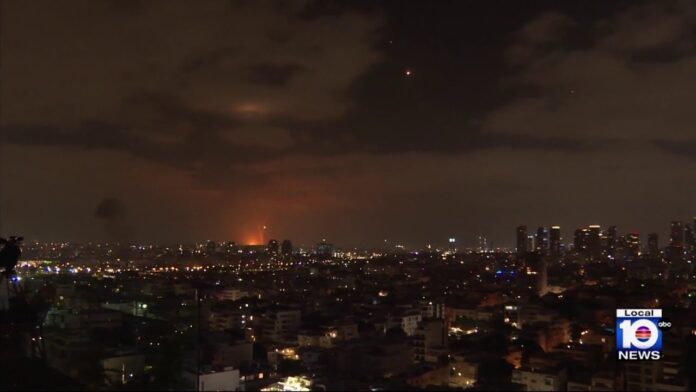Trump says Iran is near a nuclear weapon, contradicting U.S. intelligence and IAEA reports.
President Donald Trump has claimed that Iran is “very close” to acquiring nuclear weapons—an assertion that contradicts his own intelligence community and the United Nations’ nuclear watchdog.
Returning early from the G7 summit in Canada, Trump addressed reporters on Tuesday, stating his belief that Tehran was on the verge of nuclear weapon capability. The remark follows a series of hostile social media posts and increasingly aggressive language aimed at Iran in the wake of Israel’s ongoing military strikes on Iranian nuclear facilities.
Israel claims it has eliminated 14 Iranian nuclear scientists in targeted strikes since Friday, calling them “key factors” in Iran’s nuclear weapons development. It insists the killings have dealt a major blow to Iran’s capacity to produce weapons of mass destruction.
Iran has vehemently denied that it is building a nuclear bomb. Officials point to a long-standing religious edict from Supreme Leader Ayatollah Ali Khamenei forbidding nuclear weapons and insist the country’s programme is purely civilian. Iran remains a signatory to the Nuclear Non-Proliferation Treaty (NPT).
Despite this, Trump doubled down on Monday, echoing rhetoric that Israeli Prime Minister Benjamin Netanyahu has pushed for more than two decades. “Iran cannot have a nuclear weapon. It’s very simple,” Trump told reporters. “I don’t care what [my intelligence chief] said.”
His comment directly contradicted testimony from Tulsi Gabbard, his Director of National Intelligence. In a public briefing to Congress in March, Gabbard said clearly: “Iran is not building a nuclear weapon, and Supreme Leader Khamenei has not authorised the nuclear weapons programme he suspended in 2003.”
However, Gabbard did acknowledge a “concerning erosion of the taboo around nuclear weapons in Iran,” and said the country’s stockpile of enriched uranium had reached record levels for a non-nuclear weapons state.
US military officials offered a more cautious view. General Erik Kurilla, head of US Central Command, told a Senate committee on 10 June that Iran was “progressing towards a nuclear weapons programme.” He stopped short of saying that Iran had resumed a weapons project but questioned why Tehran needed such highly enriched uranium under a supposedly peaceful programme.
Iran’s enrichment activities remain the most scrutinised aspect of its nuclear strategy. The country has been enriching uranium up to 60 percent purity—far beyond the 3.67 percent cap set by the 2015 nuclear deal, and much closer to the 90 percent needed for weapons-grade material.
While enrichment at this level doesn’t automatically mean Iran is building a bomb, it significantly shortens the time needed to produce one if that decision were made. This, experts say, is why the international community is on edge.
The International Atomic Energy Agency (IAEA) has repeatedly warned about Iran’s escalating enrichment but has not concluded that a weapons programme is underway. It continues to monitor Iranian facilities, although cooperation with Tehran has grown increasingly strained.
The divide between Trump and his own administration’s assessments has reignited memories of pre-Iraq war intelligence failures, when false claims about weapons of mass destruction led to a US-led invasion.
Some analysts now question whether the alarmism is part of a wider effort to justify future military action. “This rhetoric is reminiscent of 2003,” said one unnamed diplomat. “We’ve been down this road before, and we know where it leads.”
For now, Iran maintains its stance: its nuclear programme is lawful, transparent, and geared solely towards civilian energy and medical research. Yet with airstrikes, assassinations, and political threats escalating, the situation remains precariously poised.
Whether Trump’s comments are based on undisclosed intelligence or simply political pressure remains unclear. But his defiance of US and international assessments risks further inflaming tensions in an already volatile region.
